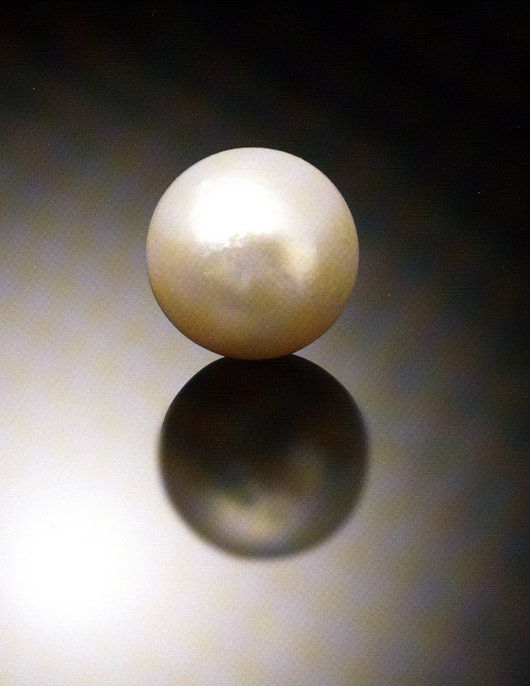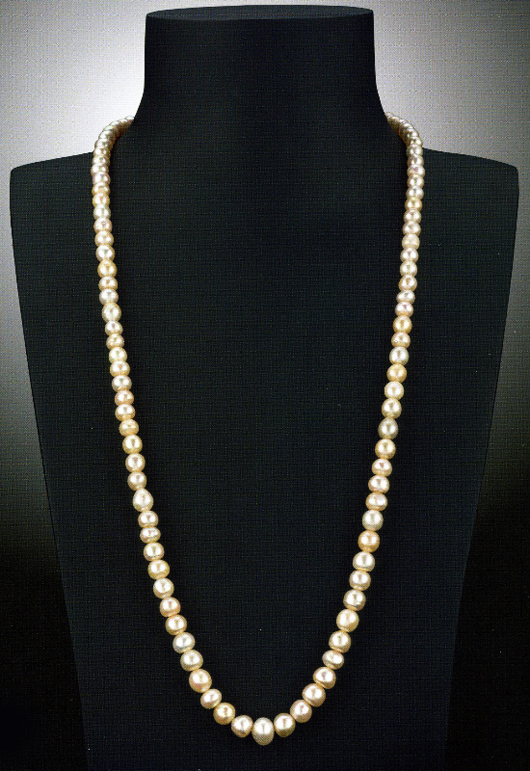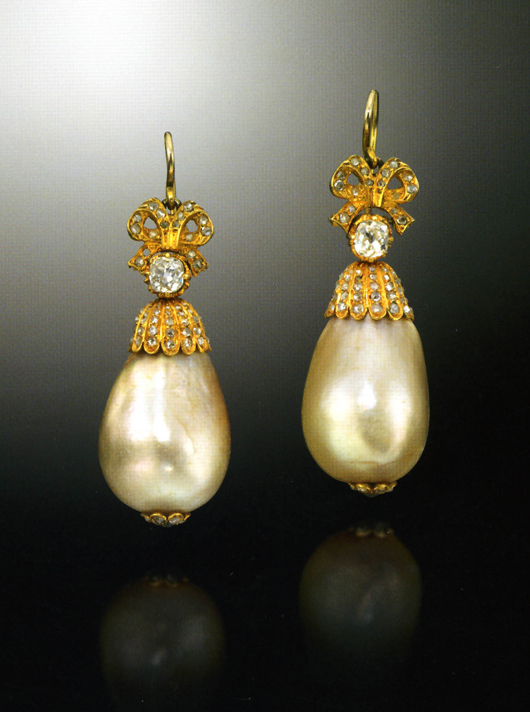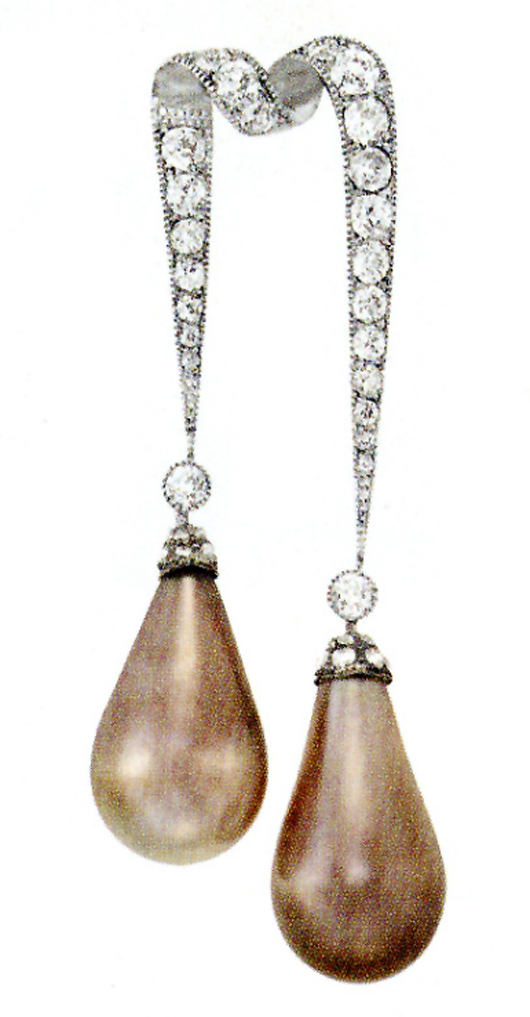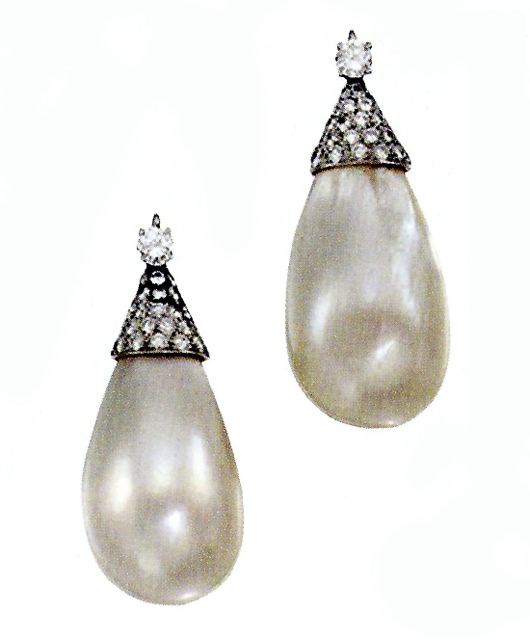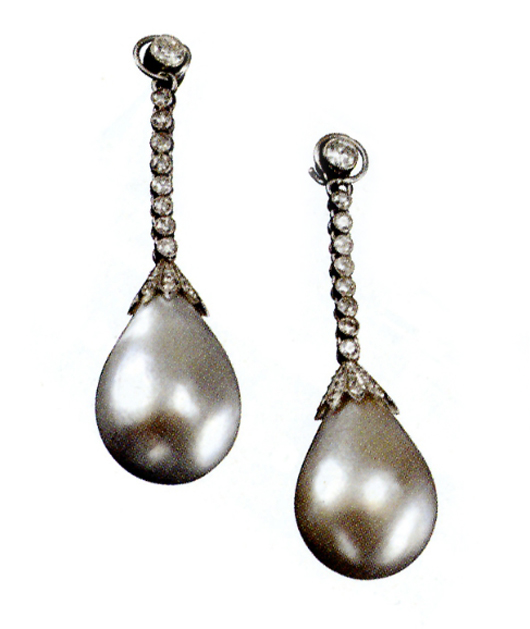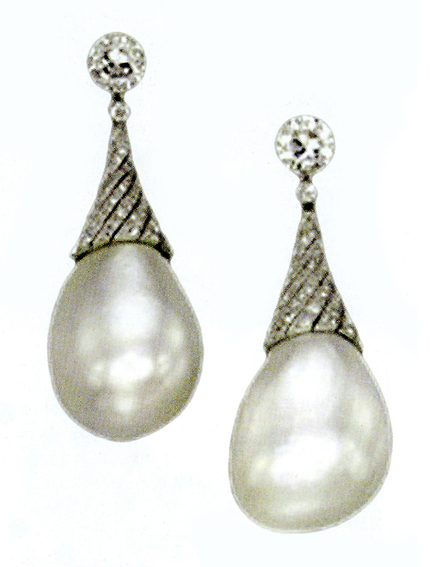
LONDON – Vermeer’s “Girl with a Pearl Earring” probably didn’t realize she was starting a trend; the small, and not so small, spheres of calcium carbonate are growing ever more valuable.
The past 12 months have seen a string of massive prices paid at auction for pearls, starting in April with a new auction record of $2.8 million (£1.74 million), or $3.3 million with buyer’s premium added, paid for a rare and exceptional pair of diamond-set natural, pear-shape pearls.
New York auctioneers Doyle said they were thought to have once belonged to Empress Eugenie, wife of Napoleon III. The previous record was set almost a year ago to the day at Christie’s in Geneva, when a pair of natural pearl and diamond earrings sold for SFr2 million (then £1.43 million).
Eugenie’s jewels were sold in an historic auction held inside the Louvre in 1887 after Napoleon’s defeat in the Franco-Prussian War. The sale lasted 12 days, such was its size, with the New York jeweler Tiffany buying almost a third of the French crown jewels.
Also in May 2013, Sotheby’s Geneva took a bid of SFr1.9 million (then £1.36 million) for silver screen siren Gina Lollobrigida’s pearl earrings set with diamonds, said to have once been in the collection of the House of Habsburg, one of the most important royal families in Europe.
A Salisbury auctioneer currently holds the record for the largest round natural saltwater pearl ever offered at auction, a marble-size South Sea beauty which sold for £811,000 with premium on May 1 this year. Dubbed the mother of all pearls, it was identified by Woolley & Wallis specialist Jonathan Edwards when he was shown a pair of earrings. X-rays confirmed one was the real thing, while its mate was a cultured pearl.
Weighing 33.14 carats and measuring 0.7 inches (17.4mm) the natural pearl came from a so-called gold-lip oyster which would have taken 10 years to produce it. Just to be sure, the pearl was authenticated by the Swiss Gemmological Institute in Geneva, who described it as having “an attractive white colour with weak and rosé and green overtones, poetically also referred to as the ‘orient of pearls’”.
The lady who owned the earrings had worn them with gay abandon, unaware of the rarity and value of one of them. Its pair, although “cultured,” i.e., made with human intervention, was still worth £5,000 but was not offered in the sale.
Ladies, it’s time to check your jewelry boxes. You’re unlikely to find a headline-maker, but if you’re the owner of a pair of natural pearl earrings, or better still, a string of the things, you’re in the money, big-time. It helps to know what you’re looking for, although even the experts run laboratory tests and all big pearls are offered with gemological reports guaranteeing authenticity.
As every schoolboy and girl knows, pearls are produced when a foreign body such as a grain of sand, a piece of broken shell or parasite enters an oyster’s shell. In an attempt to reduce the irritation this causes the creature, it secretes a chemical fluid called nacre – crystallised calcium carbonate – which coats the object and the seed of a pearl is sown.
There are various types of natural pearl. If it forms as a growth fixed to the inside of the shell, it must be separated from the shell when it is harvested. Its shape is, therefore, not spherical and is known as a blister or button pearl.
If the pearl is free from the shell, the creature forms a bag or pouch-like sac around it, allowing the pearl to grow like a cyst. With luck, the pearl continues to grow in a uniform and spherical shape, so loved by today’s collectors.
However, if the cyst grows in an awkward spot inside the creature, bizarre shaped pearls are the result. These are called baroque pearls.
The demand for pearls became so great that between 1910 and 1920, experimental work carried out by notably the Japanese succeeded in producing them artificially. This involves placing a small mother-of-pearl bead inside a mature oyster through an incision in its shell.
Thousands of oysters a day are treated in this way and then returned to the sea in wire cages for three or four years. The process yields about 10% of pearls considered good enough for fine jewelry, while perhaps 20% of the harvest is rejected altogether as being substandard.
When the first cultured pearl jewelry appeared in this country in the 1930s, prices of natural pearls collapsed. While they could not be described as fakes, pearls produced by man’s intervention were considered less desirable and trading ceased until positive tests were discovered that would tell the two products apart.
More of a worry are imitation pearls, particularly those made from glass and coated in a substance known as “essence d’orient.” This is made from the scales of a particular fish and when applied, often with as many as 20 layers and then burnished to a sheen, is difficult for the unwary to detect. Try the tooth test: the fake is smooth but a real or cultured pearl feels gritty when rubbed against the enamel of one’s tooth.
While there is no such thing as a flawless pearl, the surface perfection has the greatest affect on its value. In general, flaws are a good sign, as they most often indicate that a pearl is real and not an imitation. However, a pearl with sizable or numerous blemishes may be less durable and less desirable. Most importantly, avoid pearls that are cracked through or a patchy with missing coating.
When it comes to the care of pearls, both natural or cultured, there is one golden rule: when applying perfume, hairspray, or deodorant, wait for it to dry before allowing pearls to come into contact with your skin. Otherwise the iridescence, lustre and colour of pearls can be ruined in a very short space of time. Pearls that appear dull and lifeless are often victims to exposure to such chemicals.
# # #

ADDITIONAL IMAGES OF NOTE
